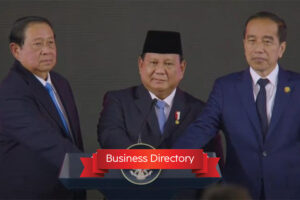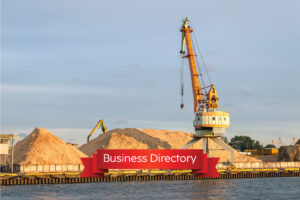President Joko Widodo (Jokowi) has recently given his approval to Presidential Regulation Number 14 of 2024, signifying a pivotal move to regulate and implement carbon capture and storage (CCS) in Indonesia. This regulatory framework is strategically designed to align with climate targets outlined in the Nationally Determined Contribution (NDC), aiming ultimately for carbon neutrality or net zero emissions (NZE). The comprehensive regulation also delves into exploration permits and operational permits, providing a solid legal foundation for the application of CCS technology in the country.
Understanding Carbon Capture and Storage (CCS)
In the realm of environmental sustainability, CCS emerges as a crucial strategy for curbing carbon emissions, offering a three-step process. This involves capturing carbon dioxide (CO2) emissions generated by industrial processes, like steel and cement production, and power generation from burning fossil fuels. The captured carbon is then efficiently transported and stored deep underground in geological formations. Let’s delve into the potential benefits of CCS and gain insights into its operational mechanics.
CCS entails capturing CO2 emissions from various industrial activities and power generation. Once captured, the carbon is transported from its source, whether by ship or pipeline, and securely stored deep underground in geological formations.
Recognizing the urgency and significance of CCS, the recent endorsement of the regulation solidifies the government’s commitment to providing a clear legal framework for carbon capture, transportation, and storage activities across Indonesia.
President Jokowi, upon signing the regulation on January 30, 2024, emphasized the vital role of carbon capture and storage technology in reducing carbon emissions from activities that contribute to environmental pollution.
The regulation goes further to stipulate the exploration permits and operational permits required for the effective application of CCS technology. The primary purpose of CCS technology is to capture carbon emissions, preventing their release into the atmosphere, and securely storing them in a designated target injection zone (ZTI).
The ZTI, located underground, encompasses layers such as the storage zone, buffer zone, impermeable zone, and geological traps. Additionally, the regulation extends its coverage to the implementation and development of CCS outside the traditional oil and gas working areas.
Indonesia’s Potential as a Regional CCS Hub
Deputy for Maritime Sovereignty and Energy Coordination at the Coordinating Ministry for Maritime Affairs and Investment (Marves), Jodi Mahardi, emphasizes the necessity of cross-border mechanisms to realize Indonesia’s ambition of becoming a regional CCS hub.
The rationale behind opening up to cross-border mechanisms is to achieve the country’s aspiration of becoming a regional hub for CCS, as elucidated by Jodi on January 23, 2024. These cross-border mechanisms are anticipated to facilitate foreign investments, reducing development costs and encouraging domestic industries to adopt this technology at an affordable cost.
Jodi adds that Indonesia’s most significant potential for CCS development lies in depleted reservoirs and saline aquifers located outside the traditional oil and gas working areas.
Depleted reservoirs represent oil wells experiencing a decline in production and are no longer economically viable with existing technology. Meanwhile, saline aquifers serve as high-salinity wells considered safe for storing carbon dioxide gas.
Allocation of Storage Capacity for Domestic Use
Moving forward, the government, through these regulations, mandates that contractors and holders of Storage Operation Permits allocate 70% of the total storage capacity for domestic use. The remaining 30% can be utilized for carbon originating from abroad.
Article 35 explicitly states that carbon storage from abroad can only be conducted by carbon producers who invest or are affiliated with investments in Indonesia.
While the allocation of carbon storage capacity has been defined, the government maintains flexibility by not ruling out the possibility of adjusting the storage portion. A Task Force will be established, overseen by the minister responsible for coordinating maritime and investment affairs, to coordinate, synchronize, and control matters related to these regulations.
The Task Force Chairperson will have the authority to determine adjustments to the allocation of carbon storage capacity after obtaining the president’s approval.
Regarding carbon from abroad, Article 45 outlines that cross-border CCS transportation will be conducted through bilateral cooperation agreements between countries. This agreement will serve as a guide for all parties to issue recommendations or permits required for cross-border carbon transportation, aligning with the laws and regulations of each country.
The cooperation agreement will adhere to laws and regulations related to international agreements. Any carbon transported into Indonesian customs territory must be registered by the importer once during the initial import, following a bilateral agreement between countries.
In the event of leaks during cross-border carbon transportation, it’s crucial to note that such leaks will not contribute to an increase in Indonesia’s greenhouse gas inventory.
Highlighting Indonesia’s Carbon Storage Potential
As an informational note, Indonesia boasts a substantial potential as a prime location for carbon storage, with an estimated capacity ranging between 400-600 gigatons (GT) of carbon.
This immense potential not only positions Indonesia as a significant player in the global initiative for environmental sustainability but also holds the promise of attracting investments and creating economic value through the various processes involved in carbon capture, transportation, and storage.





 20% off today. Whatsapp us!
20% off today. Whatsapp us!